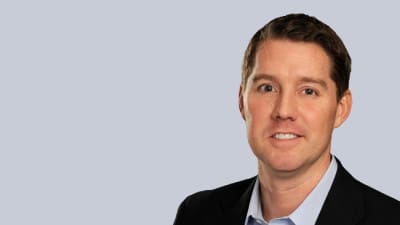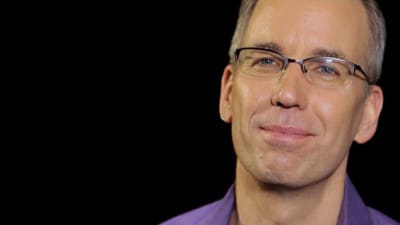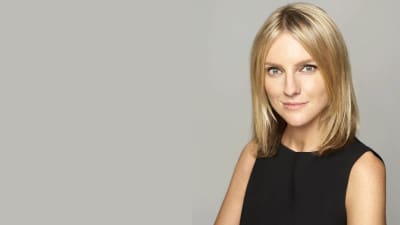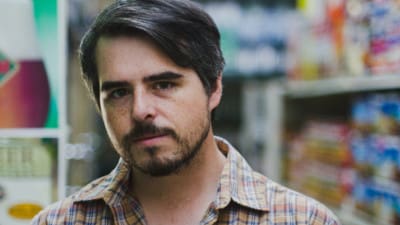
Joe Zee is having a moment. Having worked his way up from Seventh Avenue schlepper to front-row fixture over the course of his 20-year career, Zee’s star has never burned brighter. Last year, he was tapped as Elle‘s creative director to revitalize the look of its pages and bring back “the glory of what used to be.” Almost immediately, the rumor mill started churning over what his arrival meant for the rest of the staff. The haute gossip, which could have doubled as a storyline on Ugly Betty, culminated in fashion director-turned Project Runway “star” Nina Garcia’s highly publicized departure earlier this year, yet Zee remained above the fray. Now Zee — who by many accounts is one of the most collegial fashionistas around — will moonlight on a new reality show, Stylista (premiering October 29 on the CW), which pits a crew of competing hopefuls against one other for a job at Elle—however, Zee’s one fashion maven who has no designs on a television career. “I understand the place of reality TV, so I would never pretend to be a television personality,” he says. “It’s much more interesting — if it works — to have it supplement what I already do.”
Also on Mediabistro
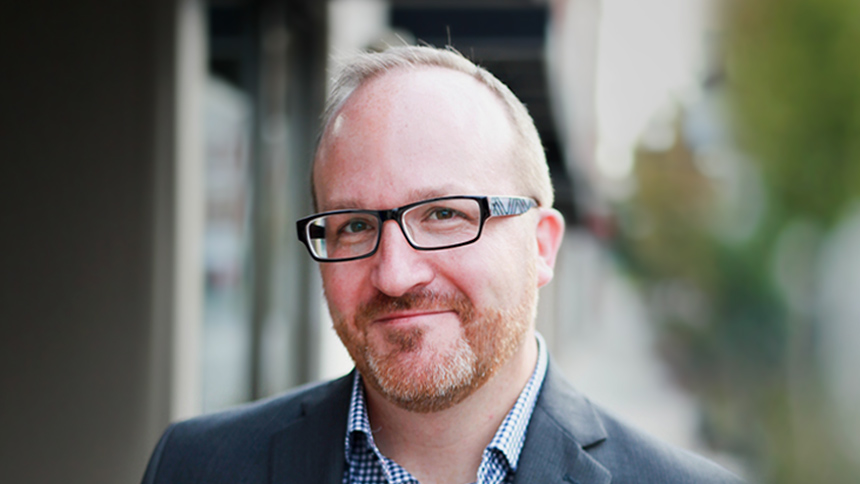

For Canadian-born Zee, who memorized fashion magazine mastheads between classes in high school, becoming one of fashion’s most respected and influential style mavens is a dream come true. While the self-described “pop culture junkie” has a fast-talking, fun-loving personality that seems tailor-made for the small screen, he says his head won’t be turned by stardom. “My first priority will always be the magazine.” Zee spoke with us about his purportedly glamorous (“but it really isn’t”) career.
Name: Joe Zee
Position: Creative director, Elle
Resume: Joined Elle in January 2007; editor-in-chief of Fairchild’s short-lived Vitals (2003-2005); fashion director at W; contributing fashion editor at Details and House & Garden; got his start at Allure. Has styled advertising campaigns for DKNY, Banana Republic, Estee Lauder, and the recent “(PRODUCT) RED” campaign for Gap, as well as the company’s Madonna-Missy Elliot ads in 2003.
Birthdate: November 23, 1968
Hometown: Toronto, Canada
Education: University of Toronto, Fashion Institute of Technology
Marital status: Single
First section of the Sunday Times: The Magazine
Favorite television show: Top Chef and American Idol
Guilty pleasure: Television
Last book read: The Emperor’s Children by Claire Messud. “It’s about a bunch of kids growing up in New York City. It’s a cross-section of culture and life.”
Did you always know you wanted to be in fashion?
I always knew I wanted to work in magazines. When I was in high school, I would sit between my free periods and read fashion magazines cover to cover. People use that term loosely, but I would literally devour every page — even the ads. I was really attracted to the branding, the designers. I would read mastheads to see who left, who moved up. As a kid in Toronto, none of these people had any resonance for me, but I started to learn doing that. I was attracted to all the fashion photography. This sounds so corny now, but I would look at a fashion story in Vogue and test myself and say, “Is this Louis Dell’Olio for Anne Klein? Is that Claude Montana?” Then I’d look at the credits and go, “Yes! That is it!” I think when I was younger, I translated that as loving fashion — and I do — but it was only when I got older, I started to see that I actually loved magazines. Now that I’m even older, I realize I love media. I’m a huge pop culture junkie, so I watch tons of television. I see every movie. I know every Billboard Top 10 song. I read bestsellers. I’m there.
| “I looked at things from a different angles. I loved Charlie’s Angels, but where the average kid would say, ‘They’re so beautiful and glamorous,’ I also remember thinking, ‘Boy, that Aaron Spelling has really got it together.'” |
Fern Mallis told me she was voted “best dressed” in high school. Did you have any early indication that you’d be dressing some of the most famous women in the world?
When I was 16, Club Monaco had just opened in Toronto. There was only one store; it was downtown. It was a cool, hip place patterned after Charivari on 57th Street, and Fiorucci. It was the cool hybrid of those two stores. I walked in and I said, “I want to work here.” They hired me — I worked part-time. I’d literally finish school and run downtown and hang out with all the fashion guys that worked there. I was 16 and they were like 25. I was really attracted to that cutting-edge fashion scene.
You mentioned you grew up obsessed with television. Was there someone on the pop culture landscape at the time that had a huge influence on you?
I looked at things from a different angles. I loved Charlie’s Angels, but where the average kid would say, “They’re so beautiful and glamorous,” I also remember thinking, “Boy, that Aaron Spelling has really got it together.” I don’t think I was trying to be that way — I was just an old soul. I watched Dynasty and The Colbys — which I loved, but I thought, “Boy, they are really nailing the TV market.”
You have this fabulous-sounding job now, but entry-level jobs in fashion are notoriously tough. What was your least glamorous gig starting out?
People do think my life is so glamorous, but even now, there are so many moments now where it really isn’t. I interned at this small trade magazine, Sportswear International. They had no budget at all. I had to return the clothes [to the design houses]. They had an office in the Garment District, and I literally had to return all the garment bags pushing a Gristede’s shopping cart like a homeless person up and down Broadway. I look back now and I think, “I can’t believe I did that.” At the time I was like, “I can’t believe I get to go to these showrooms!” I was so excited by the experience. Now, with the interns or even assistants, it’s like, “No one is doing that!”
| “I think a lot of fashion people don’t like celebrity culture. I love an actress, a musician, an athlete because they have a personality and a dimension they bring to something that I can’t get from an 18-year-old model.” |
Of course not, they want to run the magazine…
That whole entitlement thing is baffling. When I was doing the shopping cart thing, I was so happy to meet that person at the showroom — and the person was the receptionist. Nowadays, if [interns] don’t go on a photo shoot they are really upset. I think you’ve got to earn that. I was at W, and I had an intern. On her first day — she hadn’t done anything yet — she walked up to me and said, “I just want to ask — if you have a photo shoot with Gwyneth Paltrow, I’d like to come.” Half of me was like, “I kind of like that tenacity,” and the other half of me was like, “Why don’t you do what we need to do here first? I love that you’re putting in your order for which actress you’d like to meet. I can’t believe you’re doing this on day one!”
You worked with Tom Ford when he guest-edited Vanity Fair‘s Hollywood issue in 2006 and styled several of Gap’s ad campaigns. Did you find it difficult to work with a lot of celebrities on those big jobs?
I was embracing celebrity culture early on — and still — because I actually respect and appreciate it. I think a lot of fashion people don’t like celebrity culture. I think [for] a lot of them, it’s been an infringement on their world a little. I love an actress, a musician, an athlete because they have a personality and a dimension they bring to something that I can’t get from an 18-year-old model. Celebrities bring something else to fashion, to pictures.
Many fashion designers have told me over the years that they feel somewhat forced to be part of the celebrity game, especially when it comes to dressing stars for award shows. How would you characterize the overall feeling of fashion towards celebrities today?
There is a segment of fashion that really embraces it, and there’s a segment that really feels they have to embrace it and there’s a segment that says, ‘You know what? I can do without them.’ I respect all of them because if we were all homogenous, it wouldn’t really work. Are we all chasing celebs? I think we all are a little bit. Is it over- saturated? It is sometimes, but I don’t see it letting up any time soon.
Like it or not, it’s part of the culture we live in. [Celebrities] account for a big part of [the fashion] business. Something worn by “X” celebrity can translate into huge sales. Award shows have become red carpets. The Oscar pre-show is more interesting than the awards. People care more about what someone looks like than they do about who won Best Actress. I don’t know if someone could remember that [this year] Tilda Swinton won Best Supporting Actress, but they can certainly tell you about the dress she was wearing. That part is fascinating.
So the trend of celebrities supplanting models on magazine covers will continue for the foreseeable future?
Everything is cyclical but for now, they’re not going anywhere. People ask “When will the models be back?” I think if it’s the right model, they will be back.
Has the celebrity quotient in Elle increased since you’ve come on board?
Maybe a little bit. We definitely still have our models, whom I love, but there are some celebrities who are Elle girls. That’s one of things I talked about doing when I came on board — redefining that colloquialism: “She’s so Elle” or “She’s an Elle girl;” having that definitive quality back.
Who is the “Elle girl?”
She’s young, she’s a rule-breaker, she’s slightly rebellious. For me, she’s all sorts of different people. She could be Chloe Sevigny or Chan Marshall. It could also be Kate Lanphear who is in our fashion department. She’s my style director. They don’t feel they need to interpret the runway head to toe. When I got here Robbie [Myers] was so particular about saying Elle is about celebrating personal style. I love that.
I loved the look of Vitals. You’ve been reunited with your design director Paul Ritter at Elle. What major changes have you instituted in the look of the magazine?
We did the major redesign last September. We’re constantly evolving for no other reason than we’re always bored with ourselves and we always want to be better than last time. We want to be more unpredictable and exciting. Robbie, Paul and I always want things to be moving forward. We’ve done the huge drastic change — now, it’s the constant evolution of what that is.
At Elle, how do the responsibilities of a creative director differ from a fashion director? You are senior to the fashion directors, right?
Yes, they report to me. I’m responsible for all the visuals in the magazine, cover to cover. I have a lot of input into which celebrity we put on the cover. The big thing I did when I got here was change the roster of photographers and stylists we use, and really sort of take it to the next level — bring the glory back of what used to be. People keep referencing the old ’80s Elle to me. They loved it. I find a lot of inspiration in that, but I didn’t want to do a magazine that was completely referential or retro. We do those touches now and then, but we really have to do what the next look is.
Speaking of fashion directors, were you surprised at the amount of coverage of Nina Garcia’s departure?
I don’t know if surprised is the word. It was at a time when it was all about Project Runway. It has a really strong following. There was so much business press about the switch from Bravo to Lifetime, it was a topic that was top of mind. Her departure just added a footnote to all the stories and fuel to the fire. I’m not shocked about that aspect. I’m more shocked that I didn’t know we were so interesting.
When did the comings and goings of a staff at a fashion magazine go beyond getting covered in WWD and move to Page Six?
It was in People! That’s what I was shocked by, because people come and go daily. I’ve been doing this 20 years, and it was never like this. I think it was the timing, and that it was an interesting footnote to all those stories about the networks and the future of the show. [Garcia] is part of the show, and it was no different than if Michael Kors was doing something. They would have covered that extensively, as well.
Have you spoken to her since she left?
I haven’t. I think she’s been on holiday. She’s editor-at-large here. She’s starting at Marie Claire in the fall.
So now you’re Elle‘s latest reality star. What was your first reaction when they approached you about doing Stylista?
‘
The mechanics of the show were up and running prior to me coming to Elle. Robbie was like, “Come in and have a meeting with these guys.” When I did, it sounded like an interesting concept, and everything rolled really quickly. When they asked me to do the show, I said, “Sure.” Robbie has been really smart about this. She’s like, “We have to constantly reach out to new people” and that’s what television is about — allowing you to reach a whole new group of people. I’m happy to help out with the magazine in any way that I can. It’s been fascinating for me, as a television junkie, to break down the fourth wall and see how it all works.
| “I meet many people who are not in my world, and they think all I’m doing is running to a fashion show, then a movie premiere, and then I’m having dinner with Julia Roberts. That almost never happens.” |
Tell me about your role.
My participation in the show is minimal. I’m a judge. I only needed to come every third day. The shoot was four weeks. We usually did it after work, in the evening. It didn’t really affect my work day. It was easier for me because I don’t need to show up early for hair and makeup.
Anything about the experience take you by surprise?
At the beginning, it was a little trial and error. [For] the first two episodes, we were there until 4:30 in the morning — it was all new. By episode[s] three and four, they really nailed it. There were times when we were out by 7:30 or 8:00 p.m. and I got there at 3:30 pm. They were on it. The only shocking part was [how] everything happened so quickly. You’re watching these shows and you think it’s a longer period of time, but everything just really happens fast.
[TV] shows have done a lot to democratize fashion. The average person knows — or at least thinks he or she knows — a great deal about the industry. What’s the most common misconception you’ve dealt with?
People think my life is really glamorous. I meet many people who are not in my world, and they think all I’m doing is running to a fashion show, then a movie premiere, and then I’m having dinner with Julia Roberts. That almost never happens. It’s a very small part of my job.
[These shows] make it look glamorous, but not for one second do I think that’s [how] doctors act when I watch Grey’s Anatomy. I don’t think every cop looks like Mariska Hargitay. You have to understand it’s a certain level of entertainment. As long as people are aware of the industry, that’s great.
What did you learn in the earliest stages of your career that’s still relevant to what you do today?
My eye and my taste level. My first job was working for Polly Mellen, and she really taught me how to see and appreciate fashion. She had the strongest work ethic. For me, that’s very important. The other part is, I’ve worked for Linda Wells, Patrick McCarthy and now I work for Robbie Myers. These are three bosses I want in my life if I had to re-pick them all over again. They understood the value of the person they hired. They never micromanaged and they let you do your thing.
I’ve learned never to micromanage my staff and let them do their best.
What do you consider your greatest accomplishment to date?
I’m proud of a lot of things I’ve accomplished in my career. Definitely working with all these incredible, world-renowned photographers that I admired all growing up (Bruce Weber, Annie Leibovitz) was a highlight, and that also includes doing one of my first-ever styling jobs with Richard Avedon. Definitely conceiving and launching Vitals. And of course, watching Elle evolve now is great to see.
Biggest disappointment?
My biggest disappointment is probably that Vitals didn’t get a chance to really take off. I’m so proud of the staff that worked there, though. We were a small but dedicated group committed to the project and nothing else. They’ve all gone on to have amazing jobs right now. But I think the idea of Vitals just came around at the right time where that idea of unapologetic service married with luxury and design really resonated with some people. Occasionally I see influences of it still in other magazines. But I’m also not nostalgic about the end of Vitals, either. It was a good notch on the timeline.
How would you say you’ve gotten to where you are?
No sleep. Dedication. Passion. Loving what I do every single day. Being serious, but not taking it serious[ly] at all.
Do you have a motto?
I don’t take no for an answer. Polly Mellen taught me that.
Diane Clehane is a contributing editor to FishbowlNY. She writes the ‘Lunch’ column.
Topics:
Interviews

